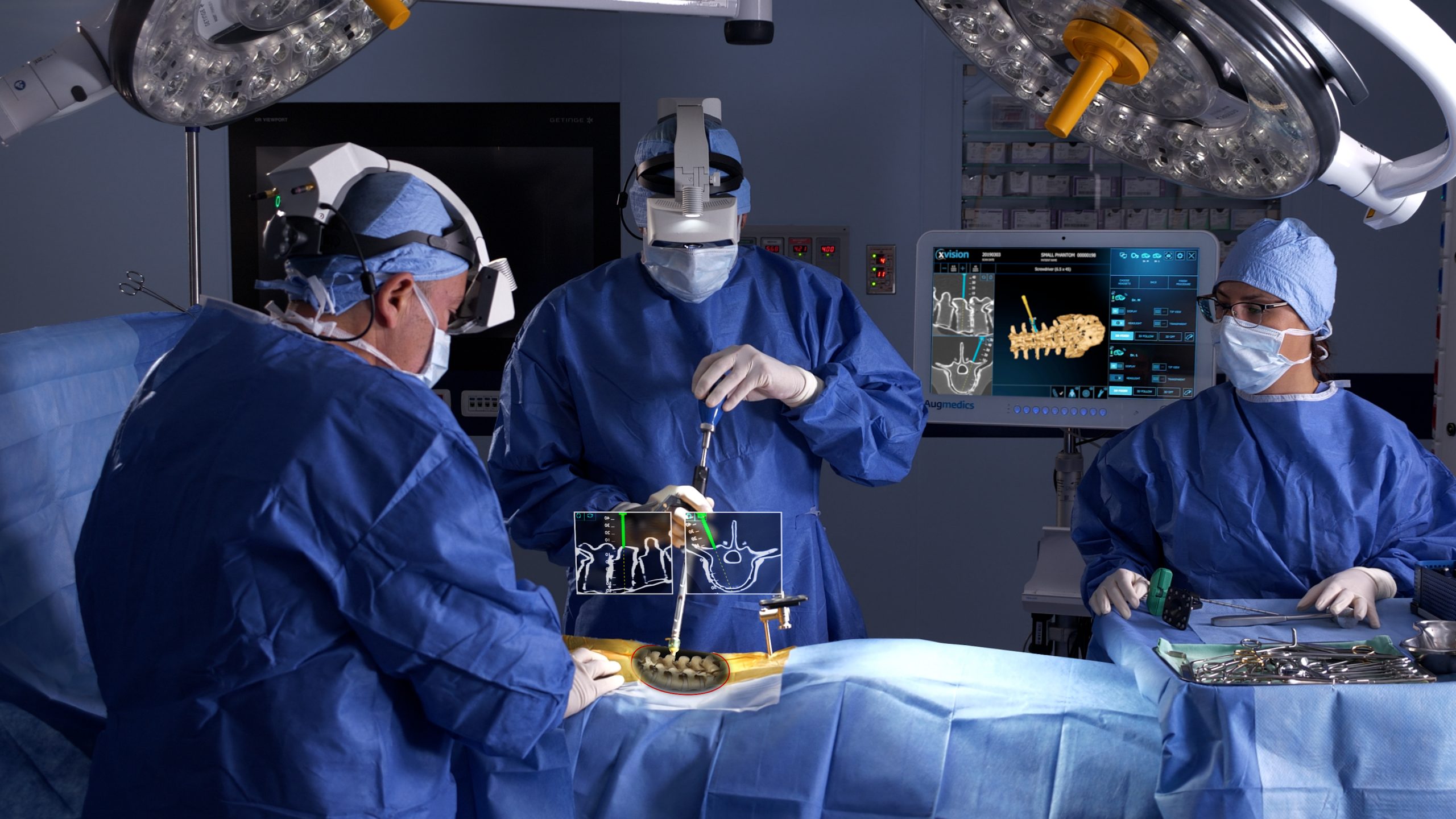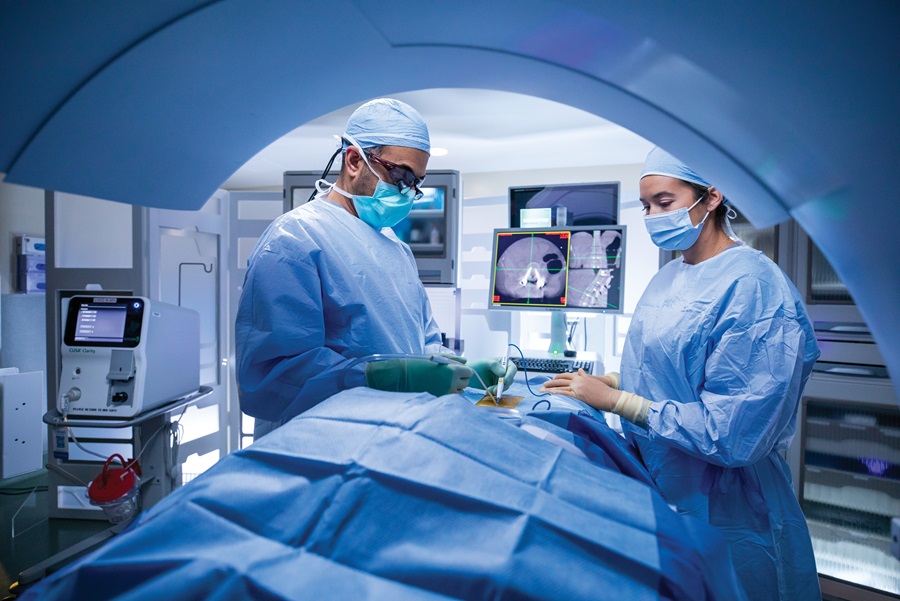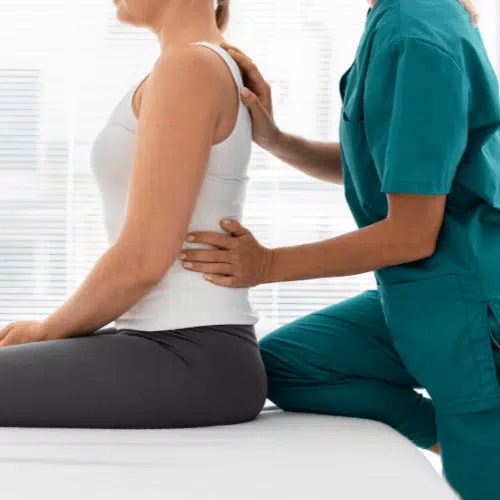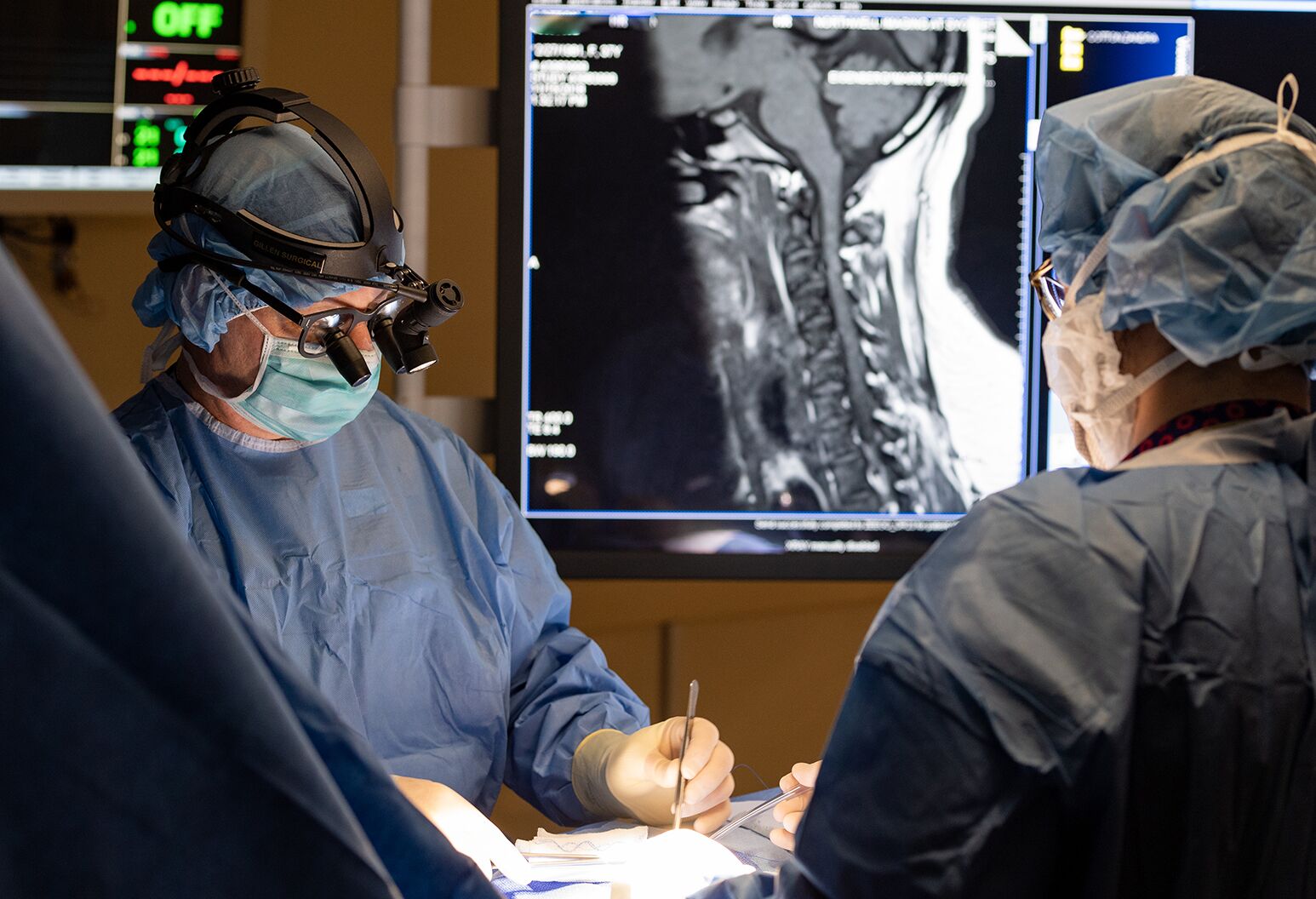An Introduction of Spine Problems That Usually Lead To Surgical Treatments
Spine conditions such as herniated discs, back constriction, and degenerative disc condition regularly require surgical treatments when conventional therapies fail to minimize persistent signs and symptoms. Recognizing the subtleties of each condition and the corresponding medical choices, such as discectomy or spine combination, is essential for effective administration.
Herniated Discs
Although lots of individuals with herniated discs may locate alleviation through conservative treatments, surgical procedure ends up being a necessary factor to consider when signs persist or get worse - best spine surgeons in st louis mo. A herniated disc occurs when the soft inner gel of a spine disc protrudes with its external layer, potentially compressing close-by nerves and leading to discomfort, pins and needles, or weakness in the extremities
Conventional monitoring usually consists of physical therapy, pain medications, and corticosteroid shots, which aim to minimize inflammation and enhance feature. However, in situations where these methods fall short to reduce devastating signs, surgical choices might be explored.
The most typical surgery for herniated discs is a discectomy, which entails the removal of the herniated portion of the disc to alleviate pressure on the influenced nerve origin. In more extreme situations, spine combination might be needed to support the affected vertebrae.
Patients are encouraged to talk about the prospective risks and advantages of surgical treatment with their health care service provider to make an informed decision. Ultimately, the objective of any surgical intervention is to recover feature, relieve pain, and enhance total lifestyle for people experiencing herniated discs.
Back Constriction
Back stenosis takes place when the areas within the spinal column slim, resulting in raised pressure on the back cord and nerves. This condition can establish in different regions of the spine, consisting of the cervical and back areas, frequently due to age-related modifications, such as degenerative disc illness, arthritis, or thickening of tendons.
Clients with spine constriction may present with symptoms that consist of pain, pins and needles, prickling, or weak point, mainly in the legs or arms. These signs and symptoms can be worsened by tasks that include standing or walking, typically leading people to seek alleviation via conservative therapies like physical treatment, medications, or epidural steroid shots.
Nonetheless, when these non-surgical interventions stop working to provide appropriate alleviation, surgical options might be taken into consideration. Usual procedures for spine constriction consist of laminectomy, which entails the removal of component of the vertebra to relieve pressure, and spine fusion, which maintains the damaged location. The choice to seek surgical treatment is normally based on the intensity of symptoms, the degree of practical disability, and the total wellness of the client. Trigger medical diagnosis and monitoring are important to avoid additional neurological concession and boost lifestyle.
Spondylolisthesis
Spondylolisthesis happens when one vertebra slips ahead over an additional, bring about imbalance of the back. This condition can arise from numerous variables, consisting of hereditary problems, trauma, or degenerative adjustments in the spine. It is most commonly observed in the back area, particularly at the L4-L5 and L5-S1 levels.

Treatment alternatives vary based on the severity of the slippage and the signs presented. Conventional procedures, including physical treatment, pain monitoring, and activity adjustment, are commonly the very first line of defense. When non-surgical strategies fall short to ease signs or when considerable nerve compression is present, medical treatment may be necessitated. Surgical choices can include spine blend or decompression treatments, intended at bring back placement and easing neurological signs. Early diagnosis and appropriate monitoring are vital for optimal results in individuals with spondylolisthesis.
Degenerative Disc Condition

Patients with DDD usually experience pain that may emit to the legs or arms, relying on the impacted region of the back. The problem can be detected with a combination of medical assessment, imaging researches, and client background. Treatment choices commonly begin with conventional procedures, including physical therapy, pain administration, and way of living modifications. When these strategies fail to supply appropriate relief, medical interventions may be considered.
Surgical options for DDD might include spine fusion or artificial disc substitute, focused on stabilizing the affected segment and reducing pain (best spine reference surgeons in st louis mo). Ultimately, the selection of treatment is individualized, taking into consideration the extent of the problem, client health and wellness, and lifestyle variables
Spinal Growths

Back lumps can arise from different variables, including genetic predisposition, ecological influences, and pre-existing medical problems. People may offer with a range of visit signs and symptoms, including localized discomfort, neurological shortages, weak point, or modifications in digestive tract and bladder function, depending on the growth's dimension and place.
Medical diagnosis usually entails imaging research studies such as MRI or CT scans, which assist delineate the lump's attributes and impact on bordering frameworks. In evaluating therapy choices, the tumor's quality, location, and type are important considerations. Surgical treatment may be warranted to alleviate symptoms, get a biopsy, or remove the growth entirely. The goal of surgical treatment is typically to unwind neural aspects and maintain the back. Adjuvant treatments, including radiation or radiation treatment, might likewise be necessary depending upon the lump's nature. Early discovery and intervention are important for optimizing results in patients with spinal lumps.
Conclusion
In summary, back problems such as herniated discs, spinal constriction, spondylolisthesis, degenerative disc condition, and spinal growths frequently demand medical intervention as a result of their potential to cause significant discomfort and practical problems. While conservative treatments may supply short-lived alleviation, surgical options come to be essential when symptoms get worse or continue. Prompt diagnosis and intervention play a critical duty in recovering feature and improving the lifestyle for affected people, emphasizing the relevance of comprehensive spine care.
